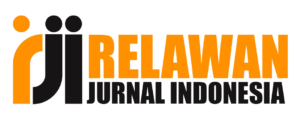Focus & Scope
Matrik : Jurnal Manajemen, Teknik Informatika, dan Rekayasa Komputer is an international peer-reviewed journal that publishes three issues per year (November, March, and July). Matrik goal is to publish high-quality articles dedicated to all aspects of current developments in the field of computer science and information technology from authors around the world. The scope includes the fields of information engineering, computing and technology which include, but are not limited to, the following scope:
Computer Network and System Engineering: Computer and communication networks: planning, implementation, operation and management of a communications network; Computer control systems design; Micro-controller applications, designs, programming and integration; Microprocessor, digital and electronic theory and application; Network and systems security: mechanisms and techniques for the security and privacy of information in the media and systems that transport and process it; Network communication theory, test, design, and applications; Network implementation and administration; Operating systems; Project Management; Real-time control networks; Software development and applications; Systems management: design, installation and management of different types of services and systems, hardware and software technologies; etc.
Computer Science and Information System: Analog computing; Approximate computing; Big data; Bioinformatics; Blockchain; Business process; Case studies and experimental and theoretical evaluations; Cloud computing (runtime systems, parallel and distributed systems, virtualization, and software-hardware interactions); Cognitive systems; Computational theory and mathematics; Computer architecture; Computer components and interconnection networks; Computer graphics and computer-aided design; Computer network security; Computer networks and communications; Computer organizations and architectures (multicores, accelerators, application-specific, processing-in-memory, near-data processing, and datacenters); Computer science applications; Computer security; Computer vision; Data mining; Data and knowledge level modelling; Dependable computing; Distributed computing system; Edge computing; High performance computing; Human-computer interaction; Human-machine interface; Information management practices; Information retrieval; Information search engine; Internet of things; Internet service architectures; Internet trust and privacy; IT governance; Knowledge based management system; Knowledge discovery in data; Mobile processing; Multimedia security; Networking technology; New and important applications and trends; Next generation media; Next network generation; Operating systems; Parallel and distributed computer; Performance modelling; Performance, fault tolerance, reliability, security, and testability; Pervasive computing; Programming (programming methodology and paradigm); Quantum computing; Neuromorphic computing; Software developments; Software engineering (software: lifecycle, management, engineering process, engineering tools and methods); Software systems; Specification, design, prototyping, and testing methods and tools; Stochastic systems; Virtual/augmented reality; etc.
Machine Learning, AI and Soft Computing: Agent systems; Ant algorithm; Ant colony optimization; Approximate reasoning; Artificial intelligence; Artificial neural networks; Automated reasoning; Bayesian network; Bayesian statistics; Biologically inspired computing; Brain emotional learning; Business intelligence; Chaos theory; Chaotic systems; Cognitive science; Complex systems theory; Computational creativity; Decision support system; Deep learning; Differential evolution; Early cybernetics and brain simulation; Evolutionary algorithms; Evolutionary computing; Expert system; Functional approximation; Fuzzy logic; Fuzzy set theory; Fuzzy systems; Genetic algorithm; Genetic programming; Hidden Markov model; Hybrid neural network; Intelligent controller; Intelligent system; Kalman filter; Machine intelligence; Machine learning techniques; Metaheuristic; Natural intelligence; Natural language processing (NLP); Nouvelle AI; Neural net systems; Neural science; Neural systems; Particle swarm optimization; Perceptron; Probabilistic models; Randomized search; Recurrent neural network; Regression trees; Superintelligence; Support vector machines; Symbolic AI; Swarm intelligence; etc.
All submissions to MATRIK undergo a rigorous peer review process to ensure the quality and validity of published research. This journal encourages the submission of papers that present innovative and original research, and that contribute to the development of new theories, methodologies and techniques in the fields of Computer Network and Systems Engineering, Computer Science and Information Systems and Machine Learning, AI and Soft Computing science and technology.
MATRIK is committed to promoting open access to scientific research and aims to make research accessible to a wider audience, including researchers and students in developing countries who may not have access to expensive scientific journals. This journal also seeks to foster collaboration and partnerships between researchers in the ASEAN region and around the world and facilitate the exchange of ideas and knowledge between different scientific disciplines.

.png)












